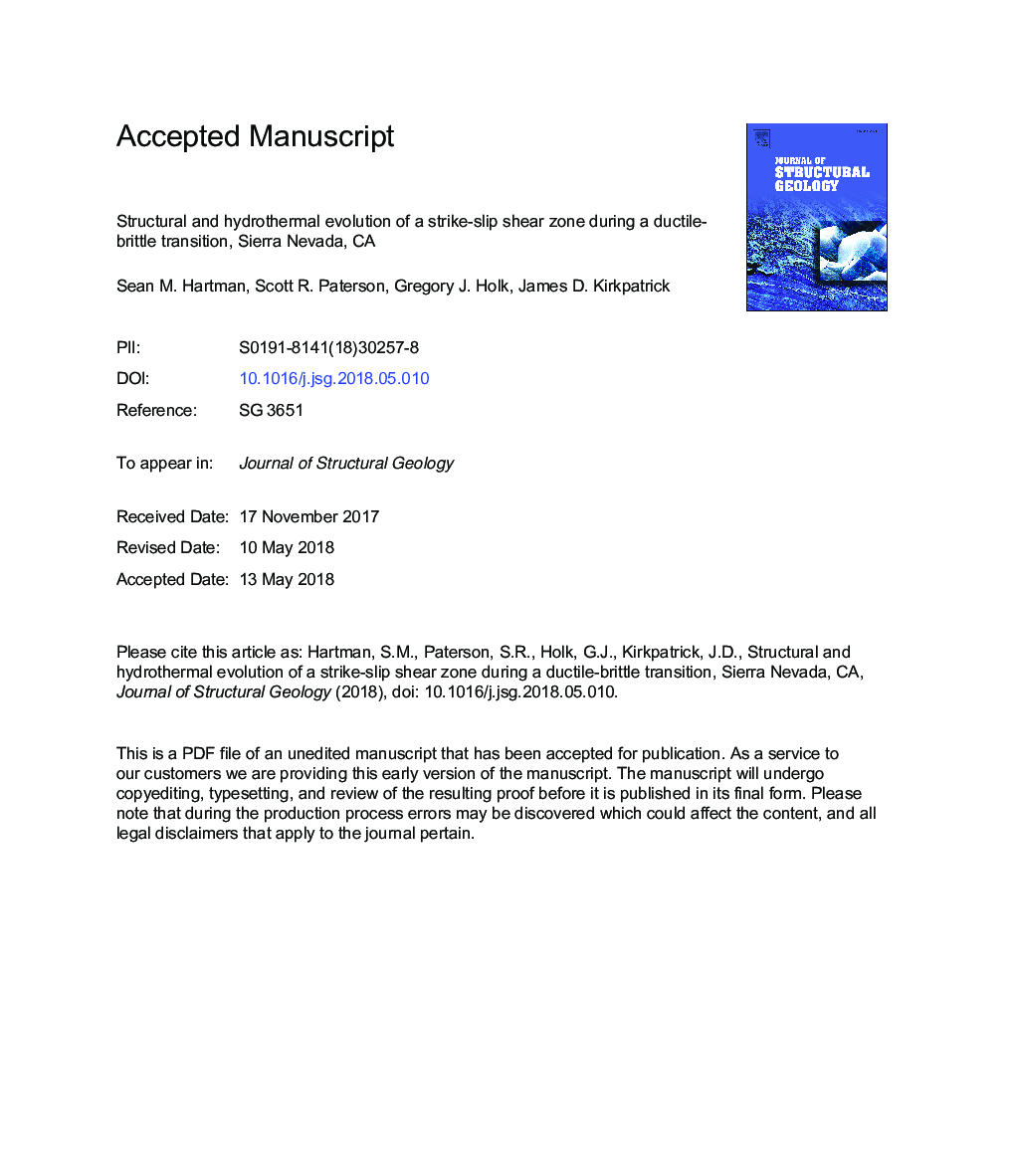| Article ID | Journal | Published Year | Pages | File Type |
|---|---|---|---|---|
| 8914385 | Journal of Structural Geology | 2018 | 73 Pages |
Abstract
The incursion of meteoric-hydrothermal fluids into the ductile crust can be evaluated with the stable isotope ratios of minerals in exhumed ductile shear zones, but the incursion mechanisms are yet to be well-demonstrated. Field structural and microstructural relations and regional oxygen isotope patterns from an exhumed, Late Cretaceous shear zone-fault system in the central Sierra Nevada, CA, are used to reconstruct the deformation history and develop insights into fluid incursion mechanisms. A ductile-to-brittle transition was partially accommodated by a strike-slip duplex involving flexural slip-accommodated folding along faults. Two main NNW-striking brittle fault strands overlap, the northern fault curves into the southern fault, which is sealed by a >4â¯m wide composite quartz vein. Based on structural relationships, we interpret the transition from ductile to brittle deformation to have occurred during cooling of the adjacent Late Cretaceous Tuolumne Intrusive Complex. Quartz-sealed fault veins in the pendant have δ18O values ranging from â3.2 to 14.5â°, and are interpreted to have precipitated partially or fully from meteoric-hydrothermal fluids, including quartz veins that have been recrystallized. The lowest values are only found within the region of the jog. The δ18O values for pseudotachylyte matrix in one sample from this fault system are δ18Oâ¯=â¯3.3â°, δ2Hâ¯=â¯â137â°. Together, these data indicate meteoric-hydrothermal incursion into a deforming, seismogenic brittle-ductile transition.
Related Topics
Physical Sciences and Engineering
Earth and Planetary Sciences
Geology
Authors
Sean M. Hartman, Scott R. Paterson, Gregory J. Holk, James D. Kirkpatrick,
